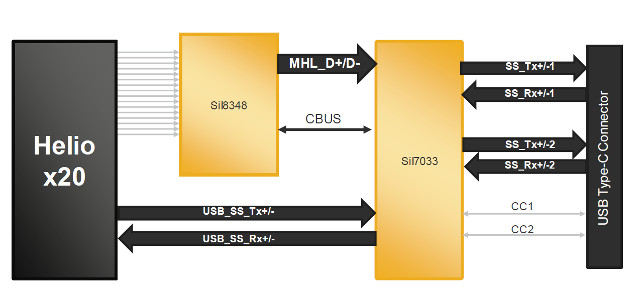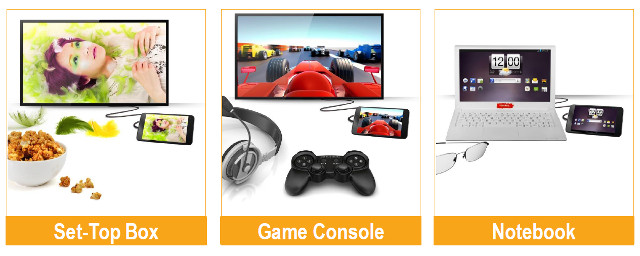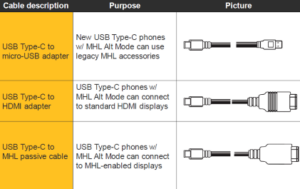USB is probably the most ubiquitous wired connector worldwide and the addition of the new Type-C version is opening it up to incredible new capabilities. With 24 contact points and 10 configurable conductors (see pin out diagram below), it can deliver 4K 60 fps video. This allows your mobile device to essentially become a set top box, PC or a game console, delivering content to your 4K TV or monitor.

Now, Lattice Semiconductor and MediaTek have teamed up to offer a new reference platform design that will help speed adoption of this USB Type-C.
We had a chance to learn more in an interview with Abdullah Raouf, Sr. Product Marketing Manager at Lattice. He detailed the general features of the USB Type-C connector as:
- Up to 100W charging
- Over 10Gbps data rates
- Reversible connector
- Multiple video modes
- Flexible Vendor Defined Messages (VDMs) for authentication and security

The connector supports USB 2.0 and 3.1 (depending upon configuration). But the most interesting aspect are the Alt modes. Here, the 10 conductors can be used in novel or standard ways. For example, standardized protocols like MHL, ThunderBolt and DisplayPort can all be implemented using this connector, or something proprietary. These modes need to use Power Delivery communication, which is the protocol which also manages how power is applied (direction, voltage and current).
The new reference design also supports compression of the video (DSC). DSC is a visually lossless standard that is approved for up to 3:1 compression ratios. This can be used to lower the data rate for 4K video, thereby saving power and extending battery life on the mobile device.
For example, Raouf said that using DSC allows 4K30 4:2:0 at 1.5 Gbps; 4K30 4:4:4 at 3 Gbps and 4K60 4:4:4 at 6 Gbps. The Lattice roadmap also has a path to support 8K resolution in the future where DSC will clearly be needed. You can even use your TV remote to control your mobile device – just as if it were a set top box.
The mobile phone reference design that Lattice and MediaTek have put together leverage the strengths of each company. They claim the design is the world’s first mobile processor with Tri-Cluster CPU architecture and ten processing cores (Deca-core) from MediaTek, which includes the DSC compression core. The reference design is shown in the block diagram below.

For smartphones, Lattice’s SiI8348 MHL transmitter is used to connect to MediaTek’s Helio X20 to drive 4K video, while the SiI7033 port controller sets up MHL Alt Mode on USB Type-C as well as Power Data Objects (PDOs) required to quickly charge the phone. The SiI7033 port controller also integrates the required switches to support simultaneous MHL and USB3.1 connectivity over the reversible Type-C connector.
For docks and accessories, Lattice’s SiI7013 and the SiI9396 port controllers are used to establish MHL Alt Mode and convert MHL to HDMI transmission respectively to connect to the many displays worldwide that support HDMI.
With this partnership, MediaTek will provide the reference design for phones while Lattice Semiconductor will provide reference designs for accessories such as the Type-C to HDMI dongle, Type-C to MHL passive cable, a PD 2.0 compliant charger and docking station to allow a PC-like experience with multiple USB connections and HDMI output.
Lattice and MediaTek see the Type-C connector enabling your smartphone to become the focus of your work and entertainment activities. (CC)

Analyst Comment
The MHL ‘alt’ mode has been talked about for more than a year, but, up to now, adoptors have been conspicuous by their absence. This development may well help to develop more interest, although, so far, pretty well all the ‘Alt mode’ devices we have seen have been using DisplayPort (mainly) or Thunderbolt (just a few). (BR)

